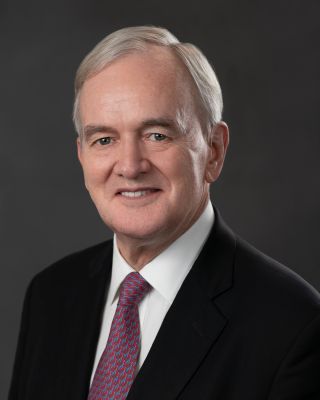NEW YORK — Financial markets do not seem to be pricing in the full risks of Russia’s invasion of Ukraine. The absence of any meaningful negative response in equity, corporate debt and sovereign debt markets in Europe, the United States, Canada and Japan would barely make sense even if there was no chance of the situation escalating into an open conflict between NATO and Russia. But that is not the only real risk; so, too, is the threat of the conflict going nuclear.
Outside Ukraine and Russia, the likely short-term economic and financial effects of Vladimir Putin’s war are material but manageable, provided the conflict does not spread. The damage of a negative supply shock would be inflicted mainly through higher commodity prices, notably those of oil and gas, wheat, aluminum, and strategic raw materials like palladium and neon gas.
Even in this “contained conventional conflict” scenario, the scarcity of fossil fuels, the loss of export markets, and occasional cyber attacks will add to the stagflationary impact of the spike in commodity prices in Europe. And, globally, medium- and long-term potential output will suffer, owing to the new bifurcation between a China- and Russia-centered trading and financial system and one with the US, Europe, and Japan as its hubs. Moreover, risk-averse defensive reallocations of investment and other resources will further depress potential output as governments and corporations pursue greater supply-chain resilience.
Global asset markets have not even priced in this least-bad scenario. But if the Russia-Ukraine war escalated to become a Russia-NATO war, there would be a serious risk of nuclear conflict. One sure way to achieve such an escalation would be for NATO to establish a no-fly zone over Ukraine, as the Ukrainian government has urged.
While NATO and Western governments have imposed economic and financial sanctions on Russia and furnished Ukraine with anti-tank weapons, drones, portable surface-to-air missiles and ammunition, these forms of support do not amount to an act of war. Enforcing a no-fly zone, however, would mean shooting down Russian targets. Were NATO to take this step, a wider war would become inevitable.
Even if a wider conflict remained conventional, it would result in a regional human and economic calamity. The risk of a nuclear confrontation, with the use of both tactical and strategic nuclear weapons, would be higher than at any other point since the Cold War. Every NATO member state’s territory and citizenry would be at existential risk.
So far, NATO has forthrightly rejected calls for a no-fly zone. It has also shown restraint in response to Putin’s nuclear saber-rattling. On February 27, 2022, Putin put Russia’s nuclear forces on high alert in response to Western sanctions and what he referred to as “aggressive statements” from NATO powers. On the same day, Belarus abandoned its non-nuclear status — thereby permitting Russia’s nuclear weapons on its territory. This escalation came on the heels of Russia’s extensive strategic nuclear exercises on February 19, and Putin’s televised speech announcing the invasion on February 24, when he emphasised that Russia is still one of the world’s most powerful nuclear-weapons states.
Although such statements are probably bluster, they cannot simply be dismissed. After all, accidents happen, and the risk of a nuclear mishap grows whenever a nuclear arsenal is being brandished. Moreover, even if no rational agent would resort to nuclear force in the face of credible mutual assured destruction, the reliability of MAD may be in doubt. In addition, rationality may be in short supply where it matters most. Some observers have questioned whether Putin remains fully competent, speculating that his isolation during the pandemic has added to his paranoia.
Since January 2020, the Bulletin of the Atomic Scientists’ Doomsday Clock has stood at 100 seconds to midnight, indicating that the organisation considers humanity to be closer to a man-made apocalypse than at any other time since the clock’s inception in 1947. This assessment is driven mainly by nuclear risks, climate change and disruptive technologies. The once-a-year setting of the clock took place this year on January 20. Had it occurred instead on March 1, the clock would no doubt have been moved closer to midnight and Armageddon.
The risk of nuclear war now seems higher than at any time since the Cuban Missile Crisis in October 1962, or at least since the Able Archer NATO exercise in 1983, when members of the Soviet Union’s politburo and military interpreted the exercise as a guise for a genuine nuclear first strike and initiated preparations for nuclear war. The impact of the Cuban Missile Crisis on US stock markets was minor: There was about a 7 per cent drop in the S&P 500, most of which was recovered when Soviet leader Nikita Khrushchev gave in. The Able Archer incident did not become public knowledge until 2015, so markets cannot be blamed for not responding.
Today, there is scant evidence that markets have even noticed the rising risk of a nuclear conflict. Denial is the name of the game.
Willem H. Buiter is an adjunct professor of international and public affairs at Columbia University. Copyright: Project Syndicate, 2022. www.project-syndicate.org
